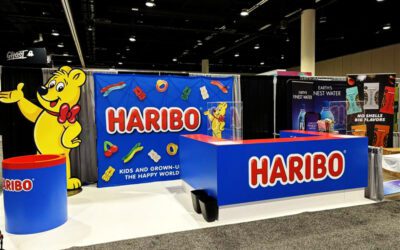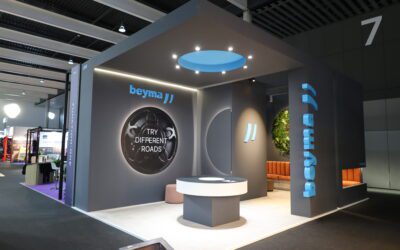Have you heard of Duolingo? It’s an app that claims to be “the best new way to learn a language.” It sounded intriguing, so we checked out what languages they offer, Spanish, French, German. Oddly, we didn’t find trade show listed. Ok, maybe that’s not so odd, but regardless of whether Duolingo recognizes it, we all know that trade shows have a unique language, and learning to speak it can be frustrating.
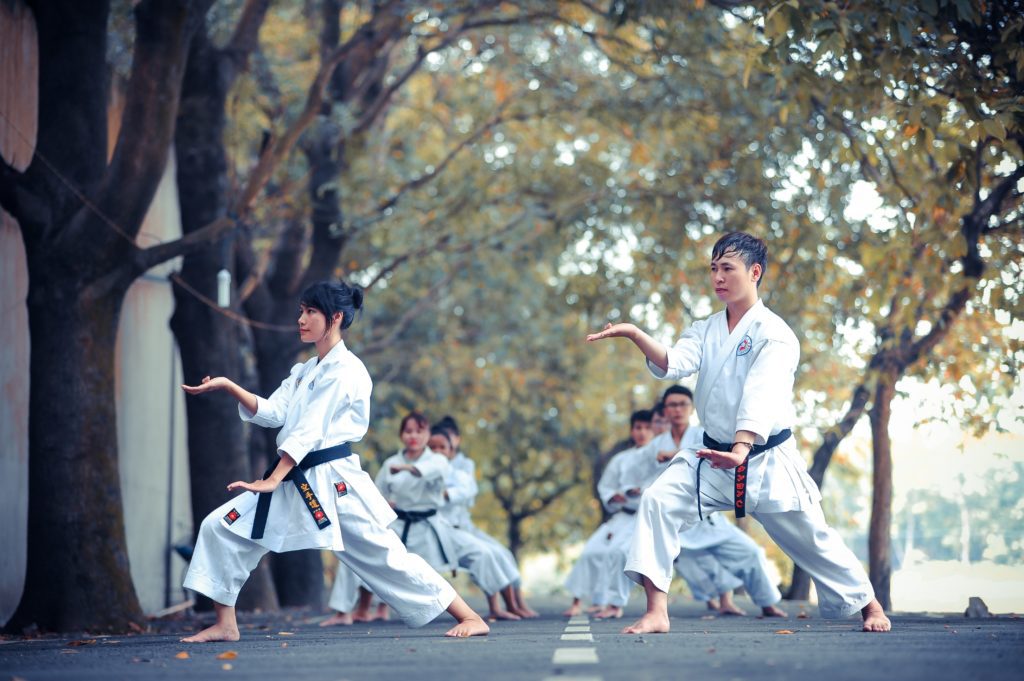
Can you interpret this?
Please grab the BOL for the EAC in booth 103 and read me the CWT?
It roughly translates to:
Can you tell me how much the freight in booth 103 weighs?
Did you get it right? Yes, congrats! No, don’t worry, you’re not alone. Trade shows are full of acronyms and terms that make little sense to someone not in the industry. A single item might have multiple names, which can throw off even the most seasoned event professionals. As we all get back to the show floor, we thought a short crash course on some basic terms couldn’t hurt. If you’re new to the industry, the terms below will get you started, and if you’re a veteran, they will be a good refresher.
Trade show 101 – the cliff notes version
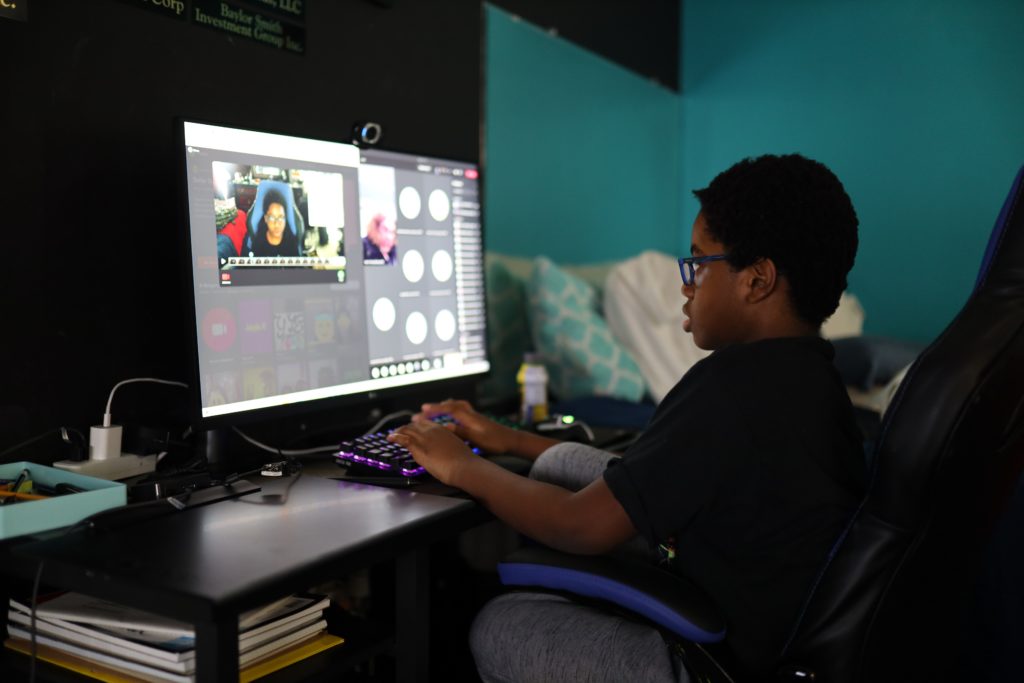
Below are some of the most basic terms you’ll hear on the trade show floor. Some of these have been borrowed from our friends at Exhibitor Magazine, while others we have defined for you. When you’re ready to dive into a longer list, you will find a good resource here.
- Accessible storage: area provided by general services contractors for exhibitors to store collateral, giveaways, and other materials that cannot be stored in the exhibit booth but may be needed while the event is open.
- EDE tip – if you want to create more floor space, it might be worth looking into accessible storage to avoid taking up a large, valuable chunk of your turf! But accessible storage doesn’t come without a cost. There are daily storage fees, overtime and double-time access days and hours, plus delivery fees.
- CAD: computer-aided design; a software program used to design exhibit booths or show floor plans. From time to time, you may want to request these from your vendors. If you ever decide to make a vendor change, these can help your new partner get up to speed on your properties before they arrive.
- Catering: food or beverage for attendee consumption in an exhibit booth. Typically, a service exclusive to a provider named by the exhibit facility.
- Porter Service: the emptying of wastebaskets in a booth or exhibit at specific intervals during the show.
- EDE tip – you will most definitely need porter service if you have catering or food service.
- Custom exhibit: booth display designed for an individual exhibitor.
- CWT: hundred weight (100lbs); unit of measurement used when weighing exhibit properties. One of the determining metrics of your material handling/drayage bill.
- Bill of lading (BOL): document between an exhibitor and any company transporting exhibitor properties. You may have BOLs from both a shipping company and a general services contractor. An essential document for tracking items on a busy trade show floor. Also referred to as air bill or waybill.
- Booth types: three main types of exhibits.
- Island: exhibit booth with aisles on four sides.
- In-line: a row of booths in a single, continuous line. Also referred to as linear.
- End-cap: exhibit booth with aisles on three sides.
- Electrical: power outlets placed in an exhibit booth.
- Electrical labor: company hired by show management to provide electrical services to exhibitors. Also referred to as an electrical contractor.
- Exhibitor appointed contractor (EAC): company hired by an individual exhibitor to provide trade show services, independent of any company hired by show management. Also referred to as independent contractors.
- General services contractor (GSC): company hired by show management to provide trade show and exhibitor services (furniture and carpet rental, material handling services, and more.) Also referred to as decorator or official contractor.
- Installation and dismantle (I&D): the process of constructing and removing an exhibit booth. Also referred to as set-up and take-down.
- Lighting: any additional illumination needed in an exhibit booth.
- Material handling: movement of show materials from the shipping dock to a booth for the show set up and back to dock for return shipment at the show’s end. Also referred to as drayage. This is not the same as your shipping costs (i.e., Sho-Air, UPS Freight, etc.)
- Pipe and drape: metal tubing supporting drapes that create in-line or linear exhibit booths.
- Rigging: overhead suspension of objects; usually applies to truss or hanging signs.
- Service kit: show information and order forms typically produced by the general services contractor on behalf of show management. Also referred to as the service manual or the kit.
- Shipping: transportation of materials from the point of origin (exhibitor office, vendor, etc.) to a trade show facility; not the same as material handling.
- Show site: trade show location; typically refers to the physical location once you have arrived. Also referred to as on-site.
- Small package: single shipments (think single FedEx, DHL, or UPS) received at a warehouse or show site; these are billed individually, usually at a flat rate, rather than a consolidated charge using CWT.
- Supervision: laborer hired to oversee the installation & dismantle of an exhibit booth. Also referred to as a supervisor.
One of these things is not like the other – insider tips and tricks

Trade show terms aren’t the only thing tripping exhibitors on-site (and no, we don’t mean physically tripping over something, please be careful!) Service kits are confusing too! Each GSC (oh, pop quiz ─ what does it stand for?) lays their service kit (and charges) out differently, so things frequently change from show to show.
Here are a few industry standards that can catch people off-guard:
- Unless otherwise stated, when you place an electrical order, it only includes an outlet in a single location. If you need outlets in multiple locations, you will have to order additional labor to distribute the power.
- Much like electrical, rigging orders are for the rights to hang something (i.e., a sign, truss, etc.), but the labor required to get it in the sky might be an additional cost. Some show managers offer packages that include labor, so read the service kit carefully.
- You are not required to hire supervisors for booth I&D, but if you don’t, most companies will not start construction until you arrive. This means don’t show up one hour before the show starts and expect to see an entirely constructed booth. If you do opt for supervision, be prepared to pay up to 30% more for services.
- Other than a bowl of candy (think Halloween size, nothing larger), catering is often exclusive to the facility’s appointed contractor, and there may be a limited selection. Double-check with show management on whether breaks or receptions are held in the exhibit hall and ask what is being served to avoid conflicts.
- Many show organizers claim that the event provides cleaning, but typically, that only includes the night before the show opening and emptying wastebaskets. If you need your booth vacuumed pre-show and nightly, you will need to order cleaning services from the service kit.
Fake it ’til you make it – why this is NOT your best bet
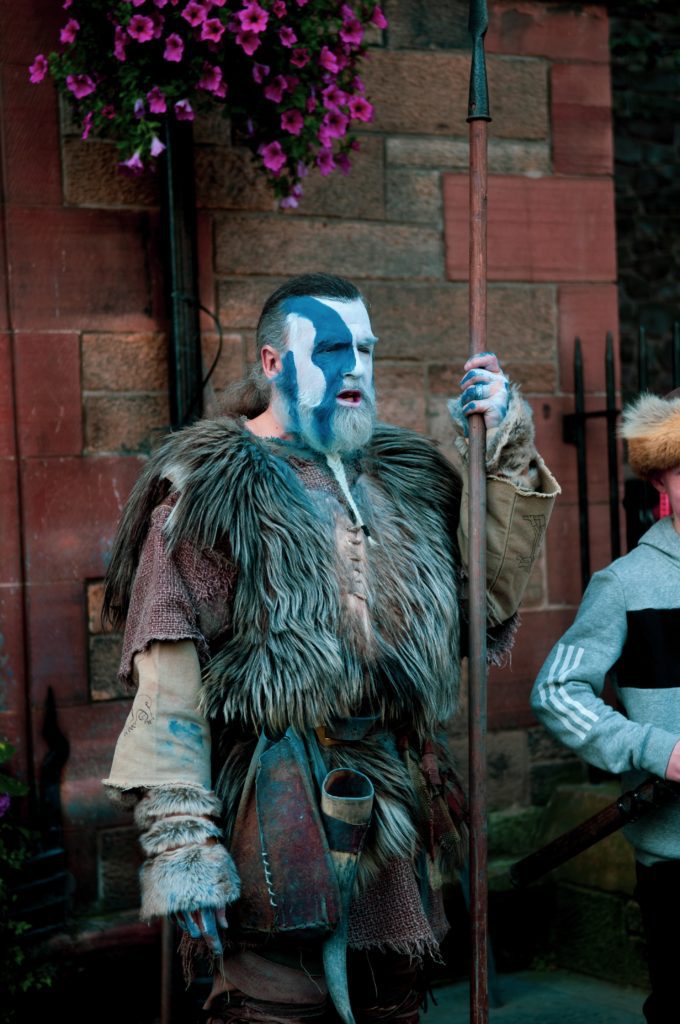
Trade shows have a unique language, don’t let it frustrate you! Pretending you speak the language can be costly, too. If you don’t know what something means, ask! We all know that trade shows can add up financially – don’t overextend your budget because you didn’t speak up. If you cannot bring yourself to admit you don’t know, there are resources all over the internet ─ make Google your friend.
Better yet, reach out to menasheJ@edecorp.com to find out how EDE can be your Duolingo for trade shows!
EDE Corp is a family-owned, exhibit agency specializing in personalized trade show solutions. We create moments of impact to draw emotional connections.

